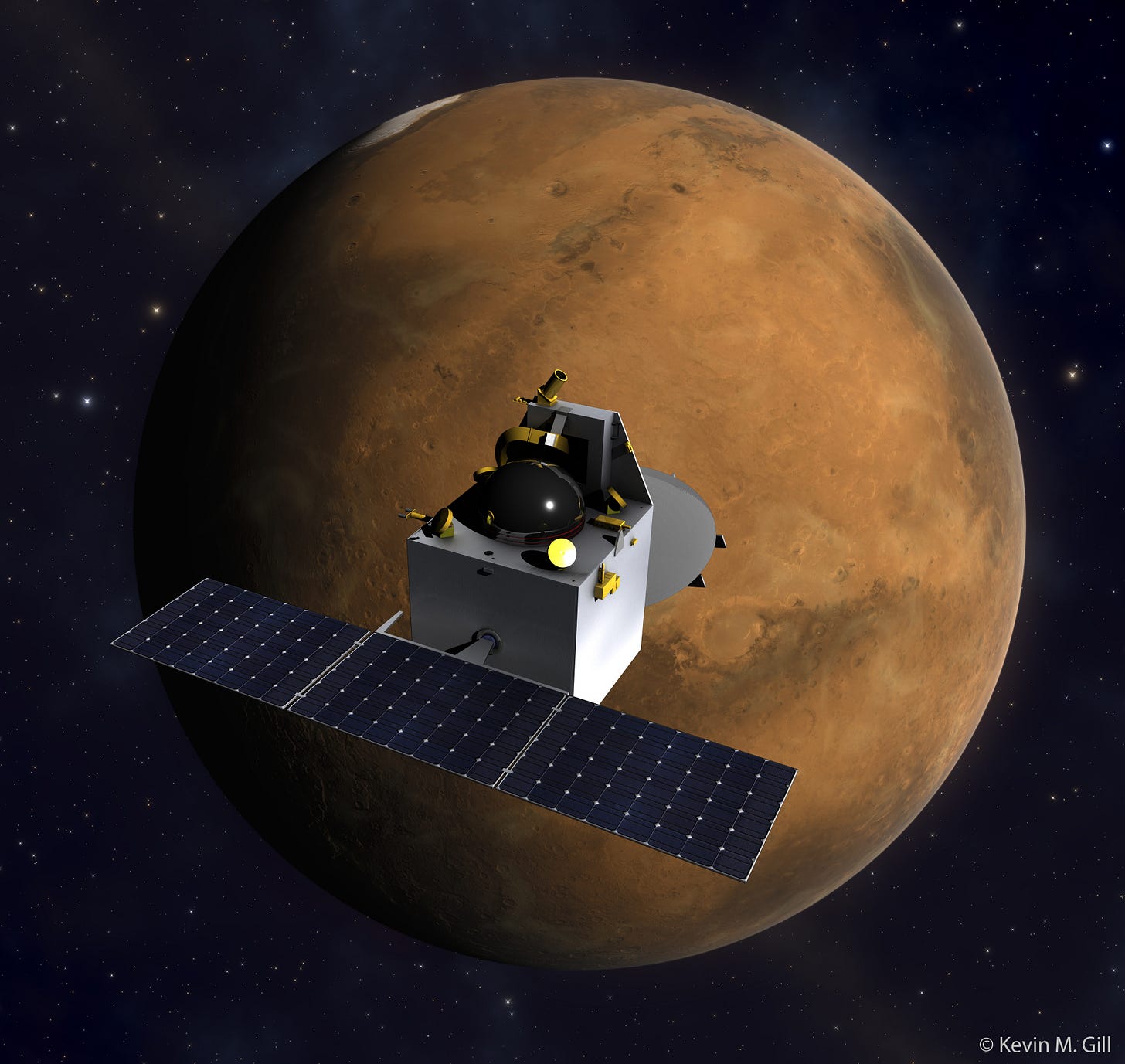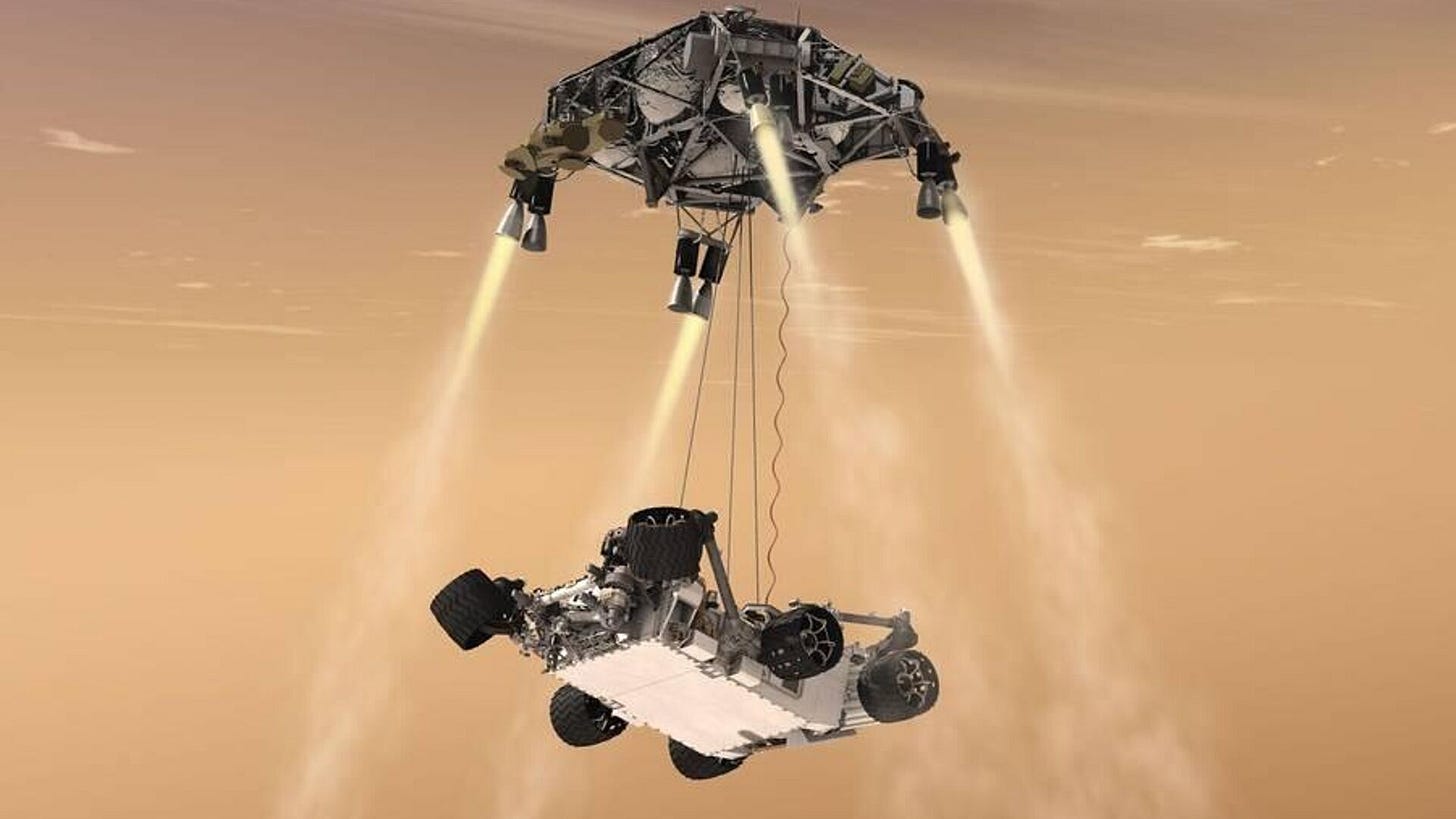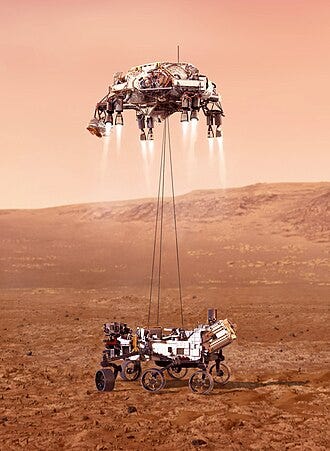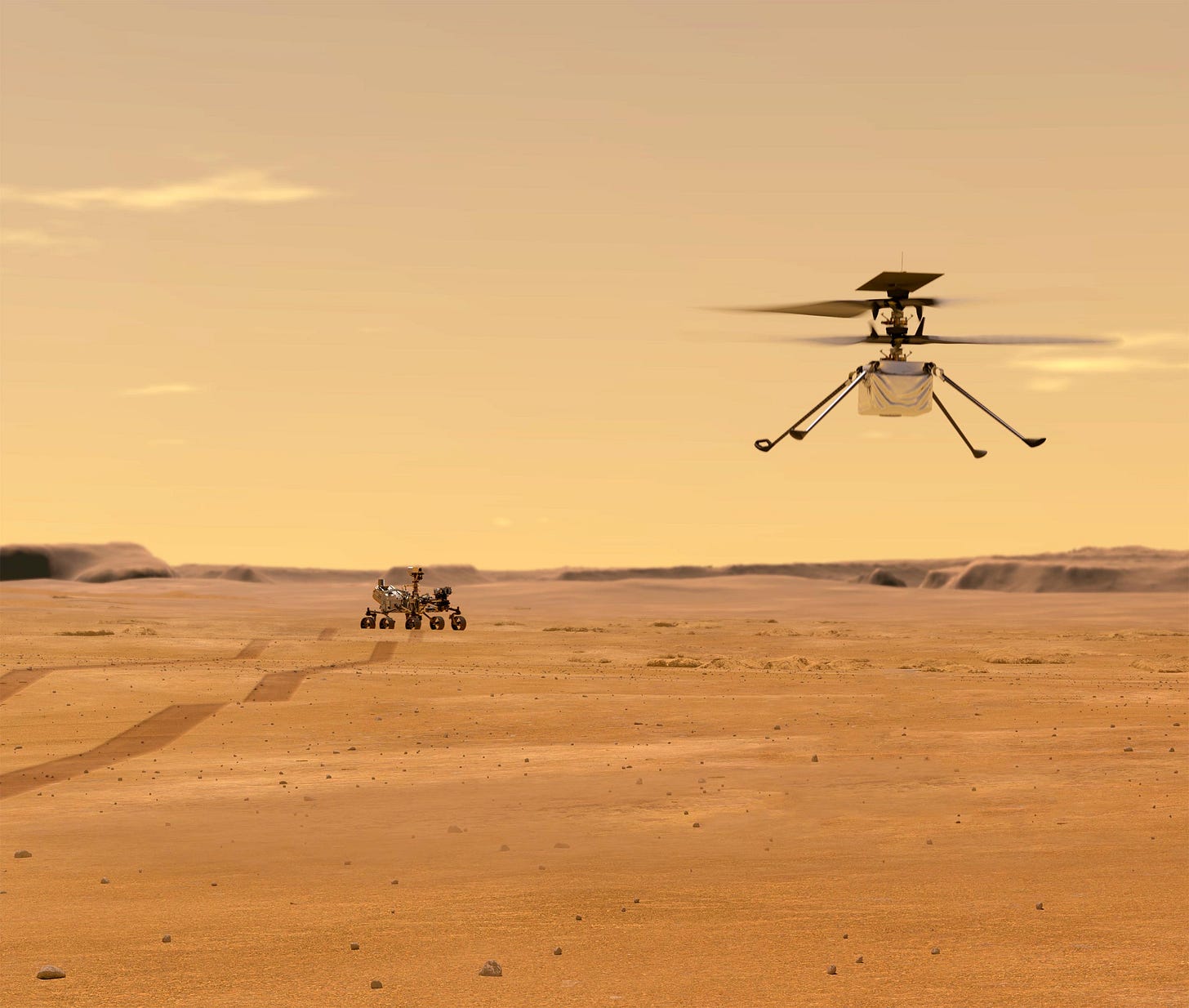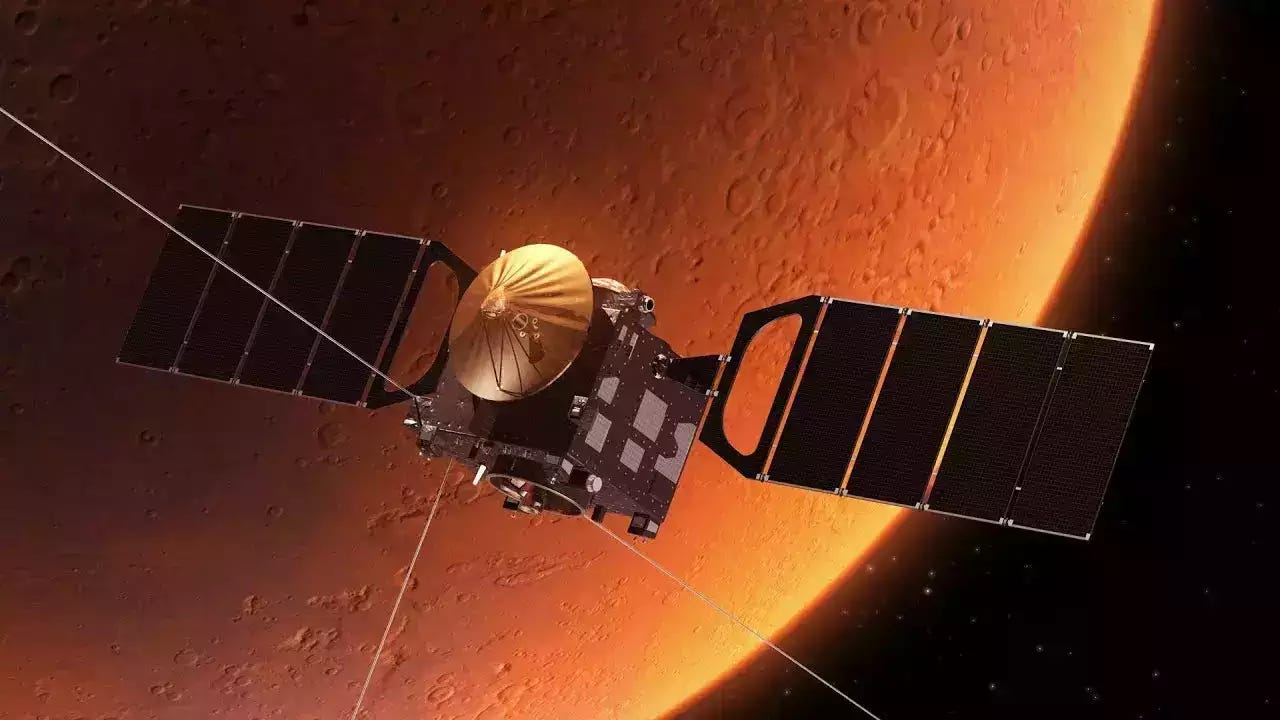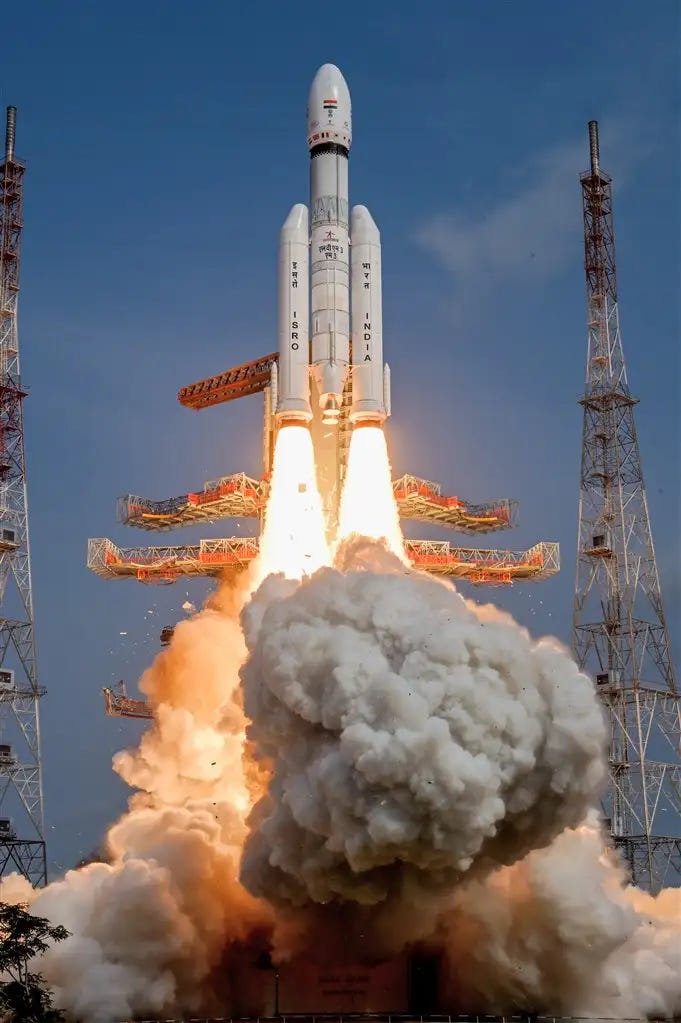Mangalyaan-2 - ISRO's plans for its ambitious mars mission
The mission will include a rover, mars helicopter, satellite and sky-crane. Read more.
What is Mangalyaan?
Mangalyaan is the name given to ISRO’s Mars missions. The first Mangalyaan mission was also called the Mars Orbiter Mission and like the name suggests, was made up of only an orbiter. This mission launched in 2013, made India the only country to put a spacecraft in Martian orbit on their first try. The orbiter was expected to last only 10 months, but it far exceeded its life and was working fine until 2022. 11 years later ISRO is planning for a second Mars mission - Mangalyaan-2.
Mangalyaan-2
Mangalyaan-2 will be a huge leap from the first Mangalyaan mission. It is also called the Mars Orbiter Mission 2, but it is not just an orbiter mission. The mission will include a satellite, rover, helicopter and even a sky-crane. If successful it will make India the third country to land on Mars.
The sky-crane
What is a sky-crane? It is one of the systems used to land a rover on Mars. The sky crane is a platform to which the rover will be attached using tethers. The crane has 8 thrusters which enable it to slowly and gently lower the rover to the ground without damaging it. At first, as the rover and sky-crane begin descending into the Martian atmosphere, a supersonic parachute slows down their descent. Later, as it gets closer to the ground, the sky crane takes over and lowers the rover to the ground. After the rover has safely landed on the ground, the tethers are cut and the crane flies off and intentionally crashes itself after its use. Usually, rovers rely on airbags for a soft landing, but this method only works for light-weight rovers. The sky-crane method was first developed and used for NASA’s Curiosity rover.
The Helicopter
ISRO also aims to deploy a rotorcraft or Mars helicopter on Mangalyaan 2. This helicopter will be similar to NASA’s Ingenuity helicopter which was recently damaged beyond recovery. This is a very ambitious step for ISRO. The helicopter will be equipped with cutting-edge scientific technologies and will be able to navigate even in Mars’ thin atmosphere. The craft will be able to provide a lot of Arial information and data on the atmosphere layers.
The Satellite
The communications relay satellite will be used to enable the rover and helicopter to communicate with ground control. The messages from the rover and helicopter will be sent to the satellite orbiting Mars, and that satellite will send the messages to Earth. This satellite could also be used for future missions if it is still in working condition by that time. It will be launched earlier than the main mission itself.
The rocket
The rocket that will be used for the mission will be one of ISROs trusted LVM3s. LVM3 stands for Launch Vehicle Mark III. It was the same rocket that was used in the recent Chandrayaan 3 mission. The rocket is however mainly used to deploy communications satellites into Geostationary orbit ( A high orbit around 36,000 kilometres from the equator). It has a higher payload capacity than its predecessor GSLV or Geosynchronous Satellite Launch Vehicle.
Mangalyaan-2 is a very abitious mission for ISRO. It will be challenging and will require advanced technologies and scientific breakthroughs for India. Authorities say that the launch could possibly even happen at the end of this year. A success will make India the third country to land on Mars after the US and China.


